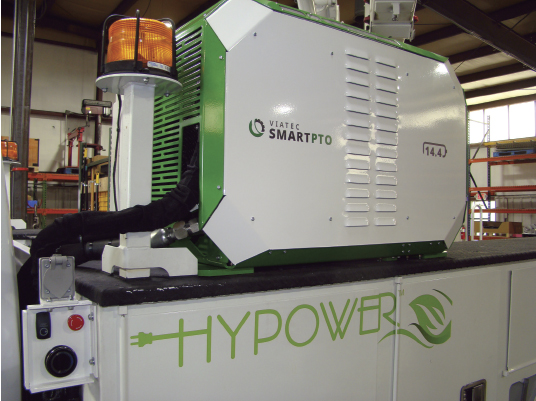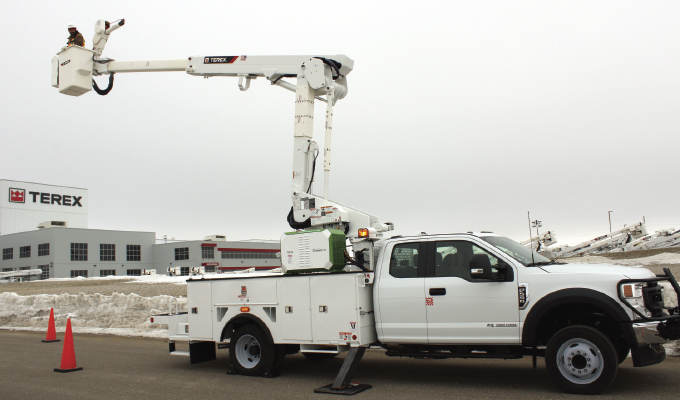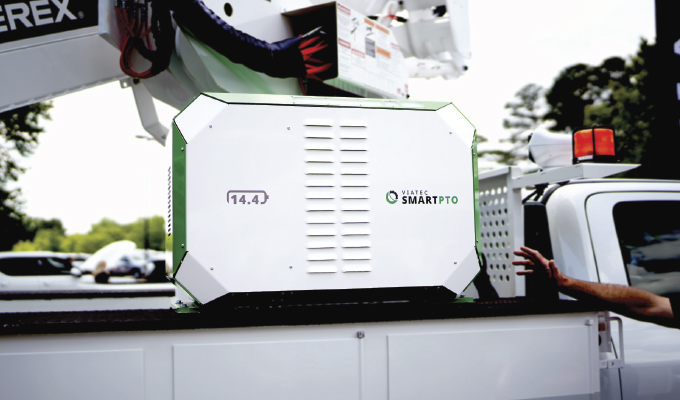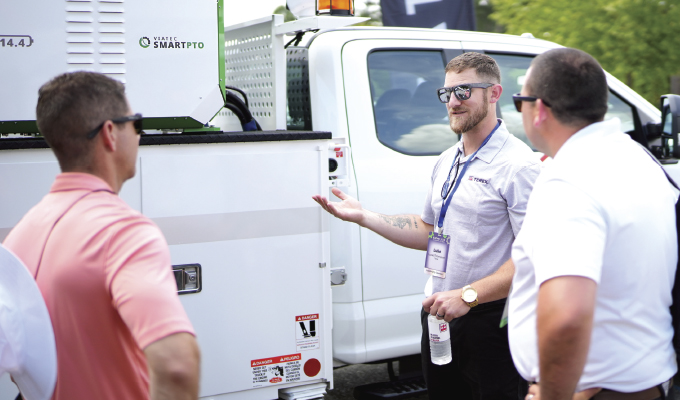It comes as no to surprise to fleet managers that their organizations are focusing on how fleet departments can support sustainability and net zero goals. According to a 2023 power and utilities outlook produced by Deloitte, as of October 2022, 43 of the 45 largest investor-owned utilities committed to reducing carbon emissions.
Proposed rules by the US Securities and Exchange Commission (SEC) could provide further momentum for adoption of green technologies. Made public in June 2023, the new rules would require public companies to annually disclose certain climate-related financial statement metrics, information related to climate-related risks, and greenhouse gas emissions in public disclosure filings. (At the time of writing, the rules were expected to be finalized in fall 2023.)
Fleet managers must not only meet management requirements, but also meet the needs of customers to ensure operations can deliver services as expected. One option that helps fleet managers do both is to choose an electric power take-off (ePTO) for boom and auxiliary functions of heavy equipment.

EPTOS IN THE PAST
When powering booms and buckets at a jobsite, the traditional method of a running truck engine or generator is long-outdated. ePTOs offer a cleaner, quieter, dependable source of power, so why are fleet managers on the fence when it comes to ePTOs? The hesitancy lies with the pre-conceived ideas people have based on past experience.
“I came into the industry in 1983 as an installation engineer for Alabama Power Company,” says Ted Barron, international sales director for Viatec. “I remember this late 1970s model truck sitting in our yard with a big box in the truck bed. That big box was the battery for an ePTO.”
Jerry Plumb, brand manager at Viatec, comments, “When we entered the market, a patchwork of engineering wove together solutions from various available components: electric motor, controller, battery, inverter, etc. The result was often incoherent, inefficient performance from an over-complicated product.”
Additional functional challenges have risen from more recent ePTO attempts. They use driveline solutions and adapted them to operate as ePTOs, taking a system from a truck that drives and modifying it for a truck that idles. Second, most were deeply integrated with the vehicle rather than a self-contained system that offers redundancy, making it dependent so that when the ePTO is out of commission, the entire truck is too.
“By the time we entered the market, embedding ePTO system integration into the truck had taken over. Complication meant when the system went down, so did the truck, which was devastating for emergency response. Those options were utilizing parts native to the truck to offset battery weight,” explains Plumb. “People had to give up performance to implement an ePTO, but the situation today is different. There are a lot more options, many of which have overcome the previous challenges. Fleet managers should take the time to understand how today’s solutions work when comparing products.”
He says, “We knew we could offer these features in a fully enclosed system with a high-performance, electric drivetrain and come away with a lightweight product that was less invasive and more reliable. The result was a highly adaptable solution, easier to integrate into broad fleets, fast.”

UTILITY TESTING
In 2018, an investor-owned utility (IOU) embarked on a pilot test with Viatec to install the company’s SmartPTO on a bucket truck. Over six months, two crews using the bucket truck validated the performance claims.
Stories of unworkable trucks at jobsites and constant technical issues permeated the industry, souring most companies on the concept, but in a month’s time, the IOU’s crews reported that the SmartPTO matched the truck’s PTO performance and claimed “it’s reliable” and “always works.”
By the end of the six-month pilot, IOU was ready to deploy an additional 23 units and start a new pilot test with Viatec for step-van electrification, while looking at additional electrification options.
ALL CHARGED UP
After weighing the pros and cons of integrating a charging system with a drivetrain, the Viatec team chose not to include this feature and focused more on reliability. In situations where electric power is not available—such as storm response or a round-the-clock job that completely depletes the battery—they designed SmartPTO to be completely redundant, allowing the equipment to be used conventionally, powered by the vehicle engine when necessary.
Terex introduced the the Viatec SmartPTO concept in 2019 and began delivering it to customers in 2021. The SmartPTO comes standard with a 14-kWh battery, which gets most crews through the normal workday. In higher-use applications, an optional 21-kWh battery is available.
“14000W is 19 horsepower. Would you rather take 19 hp plus two energy conversion losses out of the tank and pull it off the alternator, or simply plug into your grid?” asks Barron. “Choosing the grid is not only an intelligent choice, your alternator and the truck electrical system will love you.”
It’s also possible to fast charge the SmartPTO in just two hours from a 240V outlet for fast charger. The Terex and Viatec solution delivers all the flexibility of your current IC engine, while electrifying boom operation, outrigger operation, and winch functions. You can also opt to provide A/C in the cab without idling the engine.

NET ZERO JOURNEY
Green is good, but that’s not the only reason to integrate ePTOs in your heavy equipment fleet. There are other benefits that directly impact operations.
During testing with the ePTO, daily idling was reduced by 3.5 hours, translating to a monthly fuel savings of $482.34—projected to an annual savings of $5,788. Idling puts wear and tear on the engine. By reducing idling, less maintenance is required. Oil and filters were estimated to only be changed once per year instead of twice with a projected annual savings in maintenance costs of $1,150. In addition, less idling extends the projected vehicle service life from 8 to 10 years.
“While some crews are hesitant initially, we find that field personnel really like the SmartPTO,” says Barron. “Noise reduction supports a better work environment. According to utility crews, it’s safer, they can hear each other, and it creates a more pleasant work experience.”
DON’T PROCRASTINATE
Viatec SmartPTO is largely self-contained and can be installed on most equipment and chassis. The small footprint—666 square inches— makes it easy to integrate. The system has multiple pump and motor configurations so it can be installed on a wide range of Terex Utilities products and other brands.
While many initial buyers of Terex equipment with Viatec SmartPTO specified the ePTO on new orders, there’s no need to wait until you’re replacing equipment to integrate this solution. It’s worth looking at 1- to 2-year-old units in your fleet.
“It may not make sense to fund a conversion out of the operating budget,” Barron notes. “Another option is to capitalize multiple conversions in one capital project.” Field installation requires installing a couple hydraulic hoses, giving up about 500 lbs in payload capacity, and taking up just over 4.5 square feet. It takes about 12-15 hours to upfit. If your new order is on backlog, consider adding systems to your order.
“Don’t be swayed by previous experience,” Plumb advises. “There are solutions that are simple and reliable that will make the C-Suite happy, will check all the boxes that the fleet manager needs to support operations, and will also make the crew happy.”
About the Author
Tracy Bennett is president of Mighty Mo Media Partners, a PR firm serving utilities, construction, and heavy equipment markets. For more information, visit www.terex.com/utilities and www.viatec.us.




